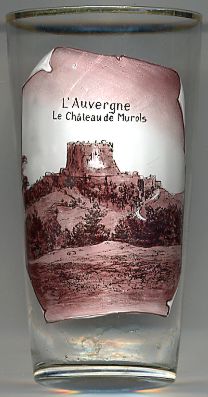

|
| FRANCE | FRANCE |
| région: Auvergne-Rhône-Alpes | |
| département: 63, Puy-de-Dôme |
 Murol is situated at an elevation of 849 m in the Monts Dore region near Lac Chambon. The municipality has a population of about 550 (2007).
Murol is part of the canton Besse-et-Saint-Anastaise, arrondissement Issoire, of the département Puy-de-Dôme.
Murol is situated at an elevation of 849 m in the Monts Dore region near Lac Chambon. The municipality has a population of about 550 (2007).
Murol is part of the canton Besse-et-Saint-Anastaise, arrondissement Issoire, of the département Puy-de-Dôme.
The site has been occupied since the Gallic era. The earliest written mention of Murolium is found in a document of 1145. In the 13th century Murol was ruled by the Chamba family, from the 14th until the 18th century it was a property of the d'Estaing. Around 1830, the name of the village was changed from Murol to Murols. The s was dropped from the name in 1953 by a decision of the Council of State. In the early twentieth century many artists moved here and founded the Impressionist 'School of Murol'.
The old  Château de Murol [left]
is situated on a basalt outcrop overlooks the town and is Murol's bets-known landmark.
The first castle was built in the 12th century to provide surveillance over several roads. It was reinforced and enlarged in the 14th century by keep,
a second chapel and the eastern buildings. The castle became the property of the d'Estaing family in the 15th century. The castle was richly decorated
and in the 16th century it was surrounded by a huge curtain wall with towers. Emerging unscathed from the sieges during the Catholic League, the castle
was transformed when a more comfortable Renaissance pavilion at the foot of the inner castle was added. However, the castle was later abandoned.
Although he ordered the destruction of numerous castles and fortresses, Richelieu spared Murol thanks to the prestige of the d'Estaing family and their
influence in the French court. After being used as a prison for many years, it eventually became a bandits' hideout during the Revolution. During the
19th century, it fell to ruin and local inhabitants pillaged the site for stone; its classification as an historical monument (it has been listed as a
historical monument by the French Ministry of Culture since 1889) helped to save it and it is now the property of the commune of Murol.
Château de Murol [left]
is situated on a basalt outcrop overlooks the town and is Murol's bets-known landmark.
The first castle was built in the 12th century to provide surveillance over several roads. It was reinforced and enlarged in the 14th century by keep,
a second chapel and the eastern buildings. The castle became the property of the d'Estaing family in the 15th century. The castle was richly decorated
and in the 16th century it was surrounded by a huge curtain wall with towers. Emerging unscathed from the sieges during the Catholic League, the castle
was transformed when a more comfortable Renaissance pavilion at the foot of the inner castle was added. However, the castle was later abandoned.
Although he ordered the destruction of numerous castles and fortresses, Richelieu spared Murol thanks to the prestige of the d'Estaing family and their
influence in the French court. After being used as a prison for many years, it eventually became a bandits' hideout during the Revolution. During the
19th century, it fell to ruin and local inhabitants pillaged the site for stone; its classification as an historical monument (it has been listed as a
historical monument by the French Ministry of Culture since 1889) helped to save it and it is now the property of the commune of Murol.
[Text adapted from http://en.wikipedia.org/wiki/Château_de_Murol]
![[scale]](lineal.jpg)